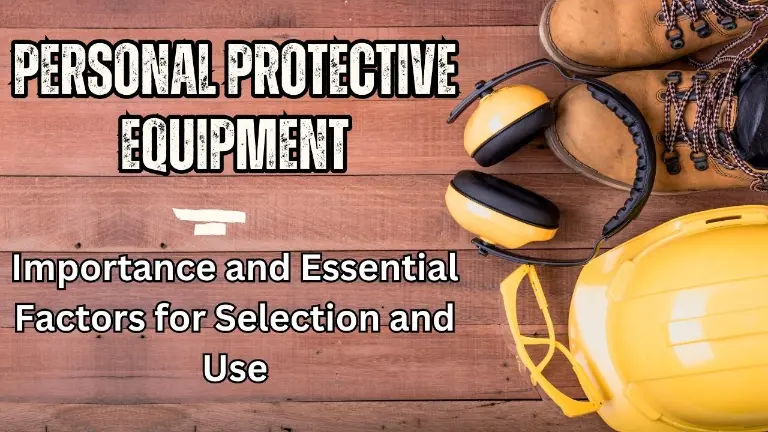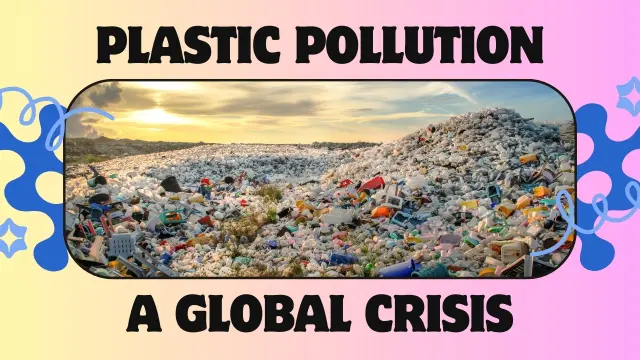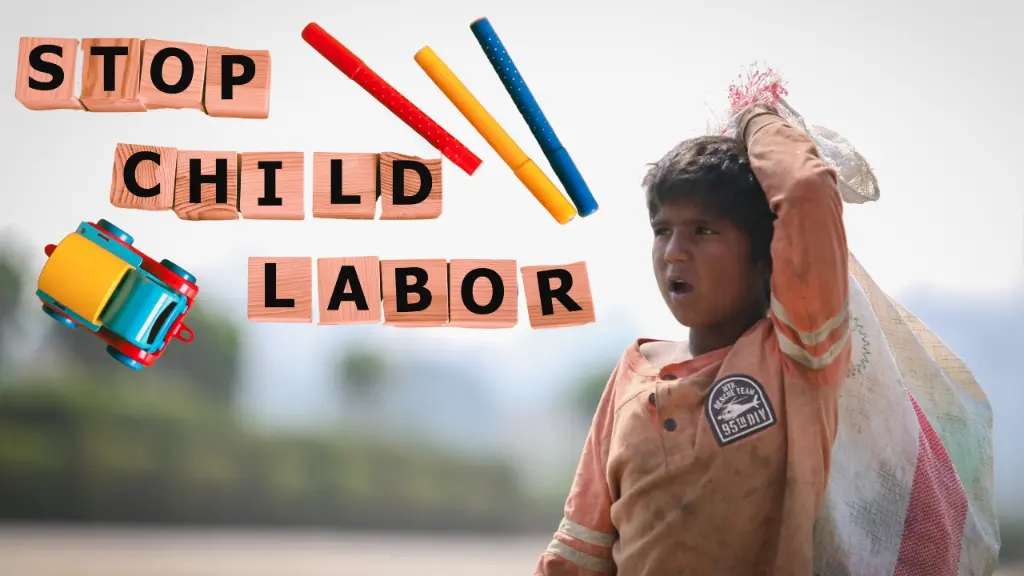In this blog, we will discover the crucial role of Personal Protective Equipment or PPE in workplace safety. This comprehensive guide is tailored for HSE professionals and those responsible for PPE program implementation and will explore its significance, selection criteria and challenges.
1. Introduction:
Personal Protective Equipment or PPE is an integral part of the Hierarchy of Controls, serving as the last line of defence against workplace hazards. However, it is essential to emphasize that while PPE is not the first solution in the hierarchy, it plays a crucial role in ensuring the health, safety and well-being of individuals in various industries.
As a qualified Health, Safety and Environment (HSE) professional with over 19 years of industry experience, I have witnessed firsthand the importance of PPE in safeguarding workers against occupational hazards.
In this comprehensive guide, we will delve into the world of Personal Protective Equipment or PPE, exploring its selection criteria, significance and the reasons why it is an essential component of workplace safety.
So, let’s dive in and equip ourselves with the knowledge necessary to make informed decisions regarding PPE usage.
2. Understanding Personal Protective Equipment (PPE)
2.1 Definition and Scope of PPE
Personal Protective Equipment or PPE refers to specialized gear, equipment and/or clothing designed to protect individuals from potential hazards in the workplace or other settings.
The main purpose of PPE is to safeguard the person wearing it and acts as a formidable barrier, protecting workers from various hazardous agents such as physical, chemical, biological and/or radiological agents that can potentially cause harm.
The term “Personal” emphasizes that PPE is meant for individual use, tailored to fit and protect each person. “Protective” highlights the objective of PPE which is to shield the wearer from potential risks and “Equipment” denotes the range of tools and gear that make up Personal Protective Equipment or PPE.
2.2 Types of Personal Protective Equipment or PPE
PPE encompasses a diverse range of equipment and clothing, each serving a specific purpose. The following are some common types of PPE:
- Head Protection;
- Eye and Face Protection;
- Hearing Protection;
- Respiratory Protection;
- Hand and Arm Protection;
- Foot and Leg Protection;
- Body Protection;
- Fall Protection.
3. The Importance of Personal Protective Equipment (PPE)
It is pertinent to mention that PPE must be viewed as the last measure, not the first measure, to prevent personnel from injury or illness.
While engineering controls and administrative controls should be the primary focus in ensuring workplace safety, PPE remains a critical component for those situations where hazards cannot be eliminated entirely.
It acts as a physical barrier between workers and potential risks thus providing an added layer of protection. By donning the appropriate PPE, individuals can significantly reduce the likelihood of injuries, illnesses or other harmful effects caused by exposure to hazards.
Moreover, PPE plays a vital role in emergency situations and unforeseen events. During crises (such as pandemics, natural disasters, or accidents), PPE becomes a critical defence mechanism to prevent the spread of infectious diseases, minimize exposure to harmful substances or provide immediate protection when engineering and administrative controls may not be feasible.
It is crucial to recognize that relying solely on PPE without considering other control measures is not a comprehensive approach to workplace safety. PPE should not be seen as a substitute for engineering or administrative controls but rather as a supplementary measure to enhance protection.
4. PPE Selection Criteria
Choosing the right PPE is a critical decision that requires careful consideration. While it is not the first line of defence in the Hierarchy of Controls, selecting appropriate PPE can significantly enhance workplace safety. Here are some essential factors to consider when making these crucial choices:
4.1 Assessing Hazards and Risks
A thorough assessment of workplace hazards and risks is the foundation of effective PPE selection. Understanding the specific risks present allows us to identify the appropriate types of PPE that can provide adequate protection against those hazards.
By identifying the hazards and their potential severity, we can make informed decisions on the best PPE options available.
4.2 Identifying Appropriate PPE
Based on the hazard assessment, the next step is to identify the specific types of PPE required. It is essential to select PPE that is designed to address the identified hazards effectively. For example, when dealing with chemical exposure, choosing chemical-resistant gloves and goggles is imperative.
4.3 Prioritizing Comfort and Fit
PPE must not only provide protection but also be comfortable and properly fitted to encourage compliance. Ill-fitting or uncomfortable equipment can hinder productivity and worker satisfaction.
By opting for adjustable and ergonomically designed PPE, we ensure that workers can perform their tasks with ease and minimal discomfort, thereby promoting their willingness to wear and utilize the equipment.
4.4 Quality and Durability
Investing in high-quality, durable PPE is an investment in the safety and well-being of workers. Inferior quality equipment may compromise protection, leading to unnecessary risks.
By selecting reputable brands and reliable suppliers, we can ensure that the PPE maintains its integrity and effectiveness over time, reducing the need for frequent replacements.
4.5 Training and Familiarity
Proper training is crucial to ensure the correct usage of PPE. Users should receive comprehensive training on how to wear, use, maintain and inspect their assigned PPE.
Ongoing training and reminders serve as valuable reinforcements, fostering a culture of safety and compliance. By equipping users with the knowledge and skills to use PPE effectively, we empower them to protect themselves and others.
4.6 Compliance with Standards
Compliance with recognized national or international standards is a vital aspect when selecting Personal Protective Equipment (PPE).
These standards ensure that the PPE meets specific performance requirements, undergoes rigorous testing and maintains consistent quality and effectiveness.
Choosing PPE that complies with these standards provides assurance of reliability and enhances workplace safety.
5. Addressing Challenges and Enhancing PPE Effectiveness
While PPE plays a crucial role in workplace safety, there are challenges that need to be addressed to maximize its effectiveness. By overcoming these obstacles, we can create an environment where PPE usage becomes second nature:
5.1 Promoting Compliance and Consistency
Ensuring consistent compliance with PPE usage can be a challenge, particularly in fast-paced work environments. By strictly enforcing safety policies, engaging supervisors, and fostering a culture of safety, we can promote compliance and hold individuals accountable for their own well-being.
5.2 Ensuring Accessibility and Availability
Easy access to appropriate PPE is essential for its effective use. Employers must prioritize the accessibility and availability of the necessary equipment.
Implementing efficient inventory management systems and reliable procurement processes ensures a ready supply of PPE when needed, leaving no room for compromise.
5.3 Emphasizing Training and Education
Insufficient training and education on PPE can undermine its efficacy. Comprehensive training programs should cover the correct usage, maintenance and limitations of PPE.
Regular educational initiatives, such as toolbox talks and safety meetings, reinforce the importance of PPE and address any concerns or questions, fostering a culture of knowledge and awareness.
5.4 Promoting User Acceptance and Comfort
Acceptance and comfort play significant roles in ensuring proper PPE usage. By involving workers in the selection process, taking their feedback into account, and addressing comfort issues, we can increase user acceptance.
Opting for ergonomic designs and providing choices that cater to individual preferences contribute to overall comfort and compliance.
5.5 Regular Maintenance and Inspection
Regular maintenance and inspection of Personal Protective Equipment (PPE) are paramount to preserve PPE Integrity in order to uphold the highest level of protection.
Trained personnel should conduct periodic inspections to detect any damage or wear that may compromise the equipment’s integrity.
Promptly replacing damaged or worn-out PPE ensures a continuous shield against hazards, instilling confidence in the safety measures implemented.
5.6 Proper Storage and Disposal to Safeguard PPE Quality
Proper storage of PPE is vital in preventing damage and contamination when the equipment is not in use. Each type of PPE should have designated storage areas that prioritize cleanliness, dryness, and easy accessibility.
By adhering to meticulous storage practices, we preserve the quality and effectiveness of PPE, ensuring its reliability when needed.
Additionally, implementing appropriate disposal methods for disposable or damaged PPE mitigates potential hazards, reinforcing our commitment to safety.
5.7 Monitoring and Feedback: Empowering Improvement
Continuous monitoring and gathering feedback from users are invaluable tools for enhancing the usability and effectiveness of PPE. By establishing regular communication channels such as surveys or suggestion boxes, we foster an environment of open dialogue.
The insights gathered provide valuable guidance for improvement, allowing us to address any concerns or suggestions promptly.
This collaborative approach ensures that PPE remains a dynamic and evolving solution, continuously adapted to meet the needs of those who rely on it.
6. Conclusion
Personal Protective Equipment (PPE) may be the last line of defence in the Hierarchy of Controls, but its significance cannot be understated.
Through comprehensive hazard assessments, meticulous PPE selection, and addressing associated challenges, we can maximize the effectiveness of PPE and create safer work environments.
Let us recognize PPE as the indispensable shield that protects us from the unseen, ensuring our well-being and inspiring a proactive approach to workplace safety.
Together, we can create a culture of safety where every individual feels empowered and motivated to take action (wear PPE when needed by choice, not by force).
8. Frequently Asked Questions or FAQ’s on Personal Protective Equipment (PPE)
Q1. What is PPE full form or what does PPE stand for?
Ans1: Personal Protective Equipment
Q2. What is Personal Protective Equipment or PPE?
Ans2: Personal Protective Equipment (PPE) refers to specialized gear, equipment, and clothing designed to protect individuals from workplace or environmental hazards.
Q3. Why is PPE important in the workplace?
Ans3: PPE is important because it acts as a crucial line of defence, shielding workers from various hazards and reducing the likelihood of injuries or illnesses.
Q4. Is PPE the first line of defence against workplace hazards?
Ans4: No, PPE is considered the last line of defence in the Hierarchy of Controls. It is important to prioritize eliminating or reducing hazards through engineering and administrative controls whenever possible.
Q5. What types of hazards does PPE protect against?
Ans5: PPE protects against a range of hazards, including physical hazards (e.g., falling objects), chemical hazards (e.g., toxic substances), biological hazards (e.g., infectious diseases), and radiological hazards (e.g., ionizing radiation).
Q6. How should I choose the right PPE for my job?
Ans6: Choosing the right PPE involves conducting a thorough hazard assessment, understanding the specific risks, and selecting PPE that provides appropriate protection against those hazards.
Q7. What is the importance of compliance with PPE standards?
Ans7: Compliance with recognized national or international standards ensures that the selected PPE meets specific performance requirements, undergoes rigorous testing, and adheres to established guidelines for optimal effectiveness.
Q8. How often should PPE be inspected and maintained?
Ans8: PPE should undergo regular inspections (frequency is to be determined by the organisation based on several factors such as nature of work, local laws and type of usage etc) by trained personnel to identify any damage or wear that may compromise its integrity. Maintenance and replacement should be done promptly to maintain the highest level of protection.
Q9. Why is proper storage and disposal of PPE important?
Ans9: Proper storage prevents damage and contamination, preserving the quality and effectiveness of PPE. Appropriate disposal methods for disposable or damaged PPE prevent potential hazards and ensure safety.
Q10. Is PPE a substitute for other control measures?
Ans10: No, PPE should not be seen as a substitute for engineering or administrative controls. It is a supplementary measure that provides immediate protection while efforts are made to eliminate or minimize hazards through higher levels of control
Thank you for taking the time to read this article on Personal Protective Equipment (PPE). Our goal was to highlight the significance of PPE as a crucial component in workplace safety and provide valuable insights as well as guidance to our readers.
If you have any comments or questions, we encourage you to share them with us. Stay safe, and let’s continue to prioritize workplace safety together.
For future updates, suggestion and discussion, please connect with us on Facebook, Twitter & Linkedin.






